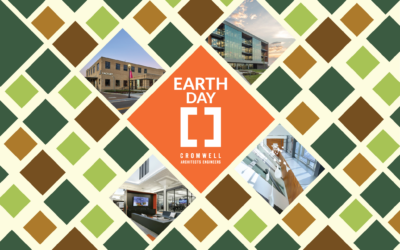The surge in online commerce over the past 15 years has dramatically altered consumer behavior, leading to the closure of numerous brick-and-mortar businesses. This trend accelerated exponentially during the COVID-19 pandemic when online purchasing became the safer alternative to physical shopping. Consequently, the once-thriving suburban American infrastructure now faces underutilization and even abandonment.
In previous generations retail business shifted away from downtowns and town centers in favor of suburban shopping malls, strip malls, and big box stores. Now e-commerce is having a similar effect on suburban infrastructure, as these malls and big box stores are struggling to maintain occupancy. We can see examples across Arkansas both in cities and small towns, although this is clearly part of a larger national and global trend.
The obvious concern is that empty retail spaces lead to run-down buildings and empty streets, which open the door to deterioration of surrounding neighborhoods and lower property values. While the abandonment of these spaces poses challenges, it could also present opportunities for innovative repurposing.
If we approach this issue with a design mindset, our society will have the chance to reimagine and reconstruct these spaces to benefit communities and the environment. But to make this possible, we will all need to think differently about planning issues like traffic, public space, and mixed-use development.
Characteristics of suburban sprawl, such as greenfield development, heavy reliance on automobiles, wide roads, congested intersections, vast parking lots, lack of low-density land-use scale, and an absence of walkability all contribute to wasteful resource utilization. However, through retrofitting and conscientious redesign, it is possible for these areas to be transformed into vibrant, sustainable environments.
To breathe new life into abandoned spaces, a series of active measures aimed at redefining their utilization could be implemented. These include:
- Transforming abandoned storefronts into dynamic, multifunctional spaces designed to foster community engagement.
- Allowing more creative and varied uses of space, including business, educational, and residential options.
- Creating opportunities that encourage public gatherings, such as short term and pop-up events.
- Rejuvenating vacant lots into lush green spaces and sustainable landscapes with environmentally friendly infrastructure.
- Reducing road width and adding sidewalks to prioritize pedestrians and cyclists, thereby fostering walkability and encouraging healthier lifestyles.
However, the success of this transformation hinges on collaborative efforts. We must advocate for strategic alliances between developers, government officials, architects, businesses, and local communities. By pooling resources and expertise, these partnerships can steer the revitalization of these spaces toward sustainable redevelopment initiatives. Promoting collaborations between public and private entities forms a fundamental pillar, guiding the path towards a future where neglected spaces are revitalized into thriving, sustainable community hubs.
The vision for this transformation is appealing, but it will require us to examine our priorities for development. We must value quality of the human experience over the convenience of cars, dense public space over expansive private property, and landscaped parks over asphalt parking.
The transformation of abandoned storefronts and suburban sprawl into sustainable, community-centric spaces requires a rethinking of development priorities and a concerted effort from various stakeholders. By repurposing these spaces, we can create environments that are not only conducive to human interaction but also environmentally conscious. The challenge lies not just in envisioning these changes but in implementing them collaboratively to build a better, more sustainable future for our towns and neighborhoods.




